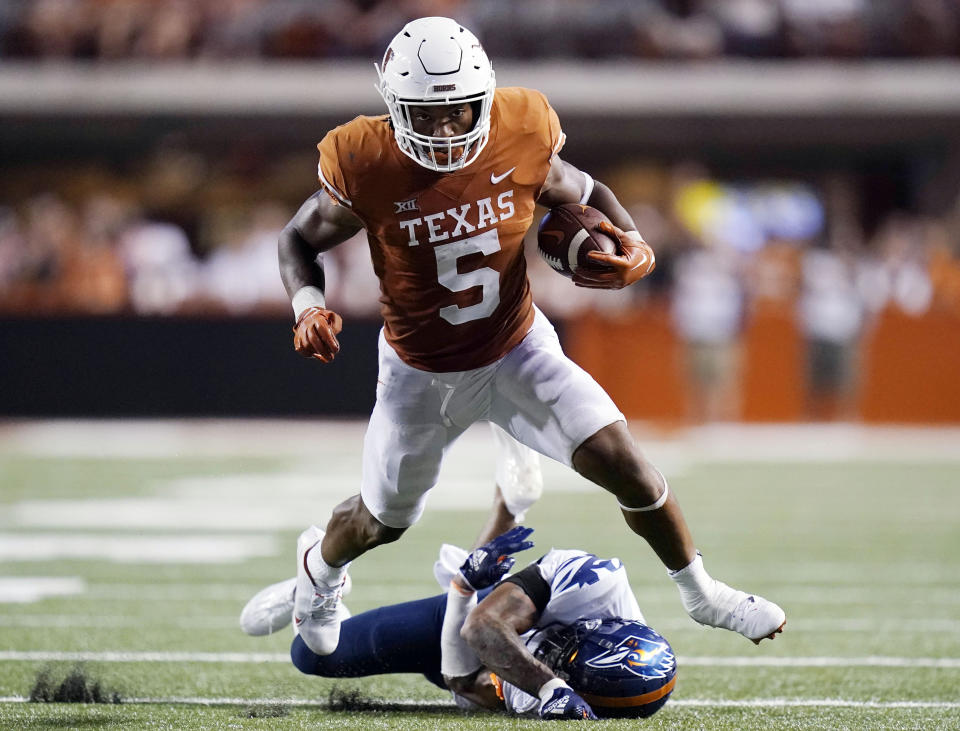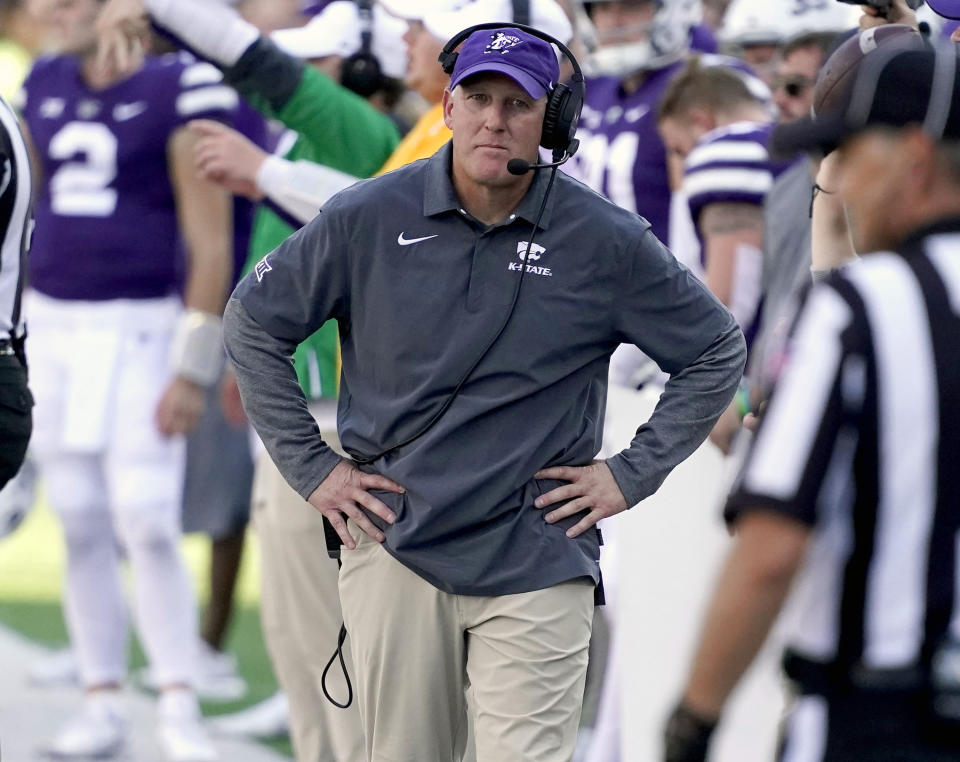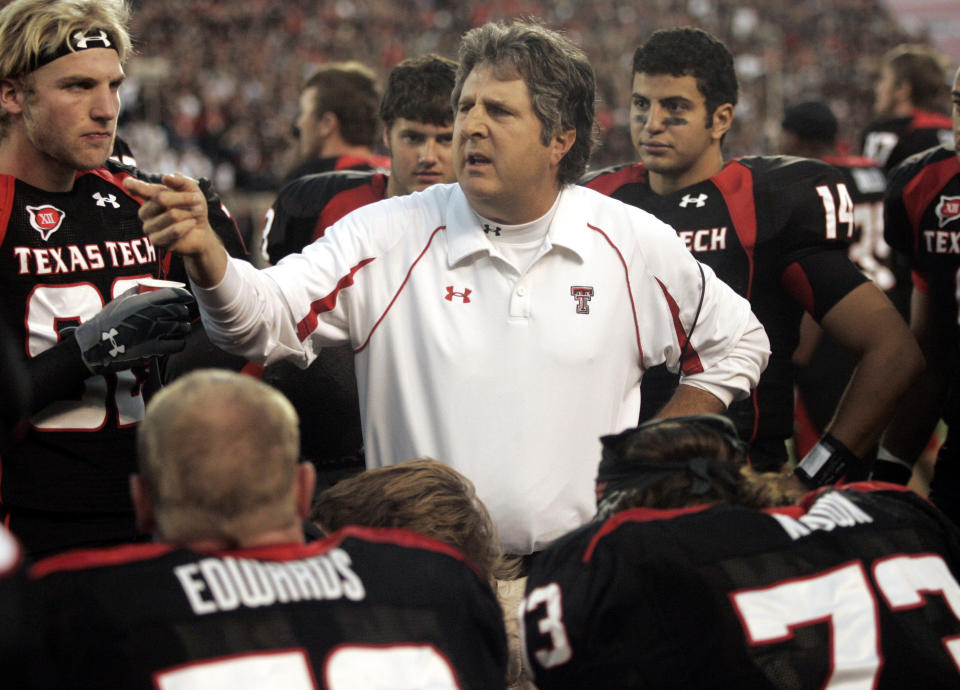Big 12's days of Air Raid offenses give way to balance and, sometimes, ground-based attacks
Chris Klieman won four national championships in five seasons at North Dakota State, bludgeoning teams with a run-heavy offense predicated on a bruising line and a deep stable of talented running backs.
Old-school football. The kind he grew up watching in Waterloo, Iowa.
But when Klieman was hired to replace Hall of Fame coach Bill Snyder at Kansas State after the 2018 season, two closely tied questions followed him: Could he replicate the tremendous success he had at the Football Championship Subdivision level in the Big 12? And could he do it relying on the same seemingly bygone offensive system he ran with the Bison?
Turns out the answer to both was yes.
The Wildcats leaned on Deuce Vaughn, who was eighth nationally in rushing and is now with the Dallas Cowboys, to win the conference championship last season, upending eventual College Football Playoff participant TCU in the title game. As a team, they joined Oklahoma in finishing in the top 15 nationally in yards-per-game on the ground.
“We have to run the football,” Klieman said by way of explanation. “If we struggle, it's because we can't run the football.”
Sounds simple, but that line of thought represents a tremendous shift from the days when the Big 12 was dominated by the Air Raid, that high-flying offensive system arguably perfected by the late Mike Leach at Texas Tech.
In 2014, seven of the top 13 teams nationally in total offense had branches tracing back to the coaching tree of key Air Raid architect Hal Mumme. By the following year, more than half of the Big 12 was running some version of the Air Raid, and three of the top eight nationally in passing offense came from the landlocked conference.
So what has changed? Why have teams that once embraced no huddles and thin playbooks, wide offensive line splits and running backs who rarely ran shifted toward — at minimum — balanced offenses and, in some cases, ground-based attacks?
Start with the turnover in the coaching ranks.
Many of the Air Raid's staunchest advocates have moved on — think then-Texas Tech coach Kliff Kingsbury, who headed for the NFL, or former Oklahoma coach Lincoln Riley, who is now at USC. In their place came coaches like the Red Raiders' Joey McGuire, who grew up embracing the ground-and-pound run game, and the Sooners' Brent Venables, whose offensive coordinator Jeff Lebby is an old line and running backs coach.
Even at TCU, where coach Sonny Dykes learned the nuances of the Air Raid from Leach during their days at Texas Tech, there is an emphasis on running the ball. That is a big reason why Dykes hired Kendal Briles to run his offense this season.
“I think we come from the same place as far as our football background in a lot of ways,” Dykes said. “He wants to run the ball; he wants to be a physical offense that runs the football. And that's what I want to be as well.”
It worked last season. Kendre Miller ran for nearly 1,400 yards as the Horned Frogs advanced to the national title game.
“We saw the value in having a tough, physical, hard-nosed run game,” Dykes said.
That leads into the second reason so many Big 12 schools have migrated away from all-out aerial offense: personnel.
The Wildcats have had Vaughn in the backfield. The Horned Frogs featured Miller, who was drafted by the New Orleans Saints, and Oklahoma leaned on Eric Gray, now with the New York Giants. Texas had Bijan Robinson, the eighth overall pick of the NFL draft by Atlanta, and backup Roschon Johnson, who was selected in the fourth round by the Chicago Bears.
That's five of the 18 running backs selected in the April draft from the Big 12.
And even though they're gone, their impact will continue to be felt.
“We lost two really good players,” Texas coach Steve Sarkisian said, “(but) when you start thinking about Keilan Robinson, start thinking about Jonathan Brooks, you start thinking about Jaydon Blue — those three guys spent a year or two with those guys in that room and know what it looks like and know what it takes.”
In the case of Oklahoma State, inexperience at quarterback rather than a star running back is what led coach Mike Gundy — one of the many early champions of the Air Raid system — to expand his running game last season.
“We went through a period of time from 2010 up until 2021, I guess, was the year we played in the Fiesta Bowl against Notre Dame, where we're running up massive numbers of yards and points. So as you do that, or as we did that, we slowly but surely got away from some of the things we instilled in our program in my first four or five years as a head coach,” Gundy said. "But now we have kind of migrated back to: These are things we need to do to be successful.
“If we're healthy up front, we're very experienced at quarterback, then yeah, we can do anything we want throwing the ball. That's more of a reason why we moved back to allocating more time to the running game than we have the last eight or 10 years.”
Then there's the third reason so many schools have returned to offensive balance: The Air Raid had become so prevalent that just about every program has run some version of it, and thus every defense has practiced ways to stop it.
So coaches like Houston's Dana Holgorsen, who was in the Big 12 at West Virginia and is back after conference realignment, began to put wrinkles in the Air Raid. The big one was implementing the run-pass option, where quarterbacks have the latitude to hand off, keep the ball and throw downfield, or tuck and run themselves.
Two of those options involving running the ball. And some semblance of balance is achieved.
“There's a lot of ways to win football games,” said Kansas coach Lance Leipold, who led the Jayhawks to their first bowl game in more than a decade last season behind an increasingly popular version of the run-pass style called the wide zone.
“If you got a system and you hold your kids accountable,” Leipold said, “and have some structure and a philosophy, you have a chance to go out there and win some football games.”
___
AP college football: https://apnews.com/hub/college-football and https://twitter.com/ap_top25

 Yahoo News
Yahoo News 



